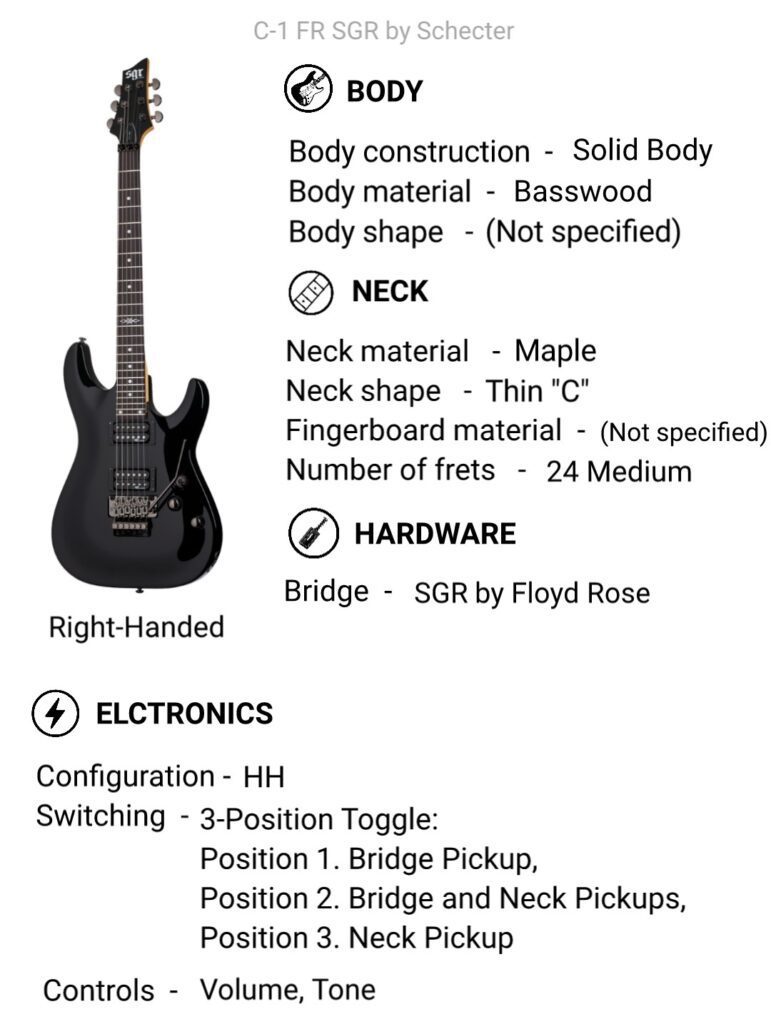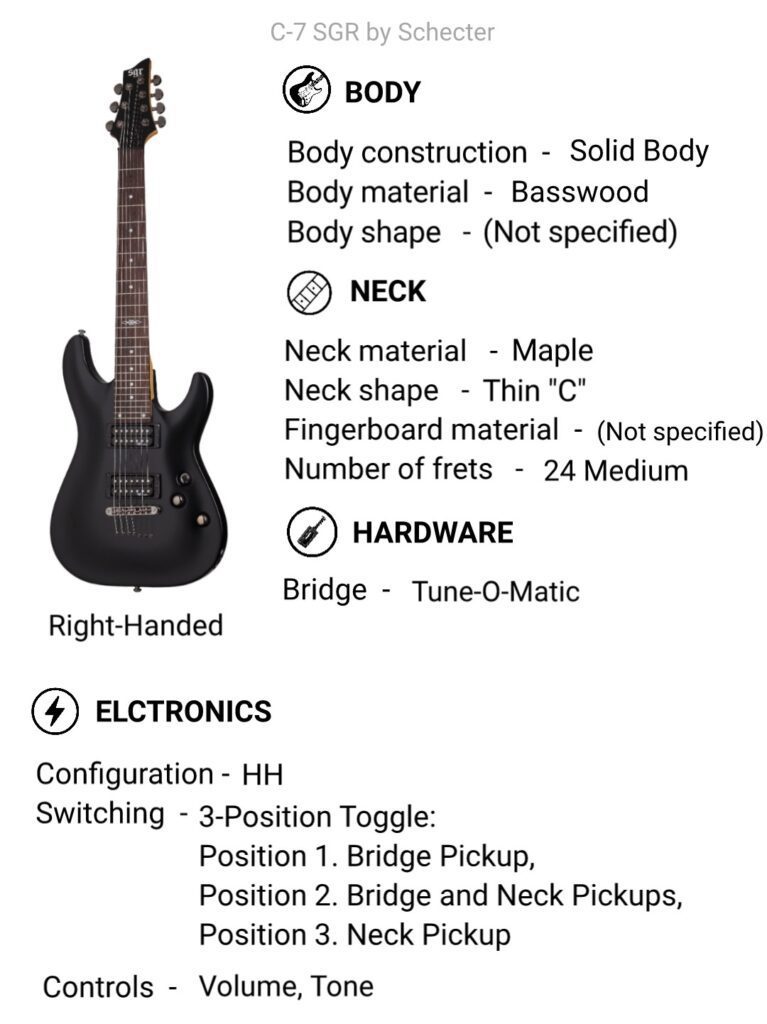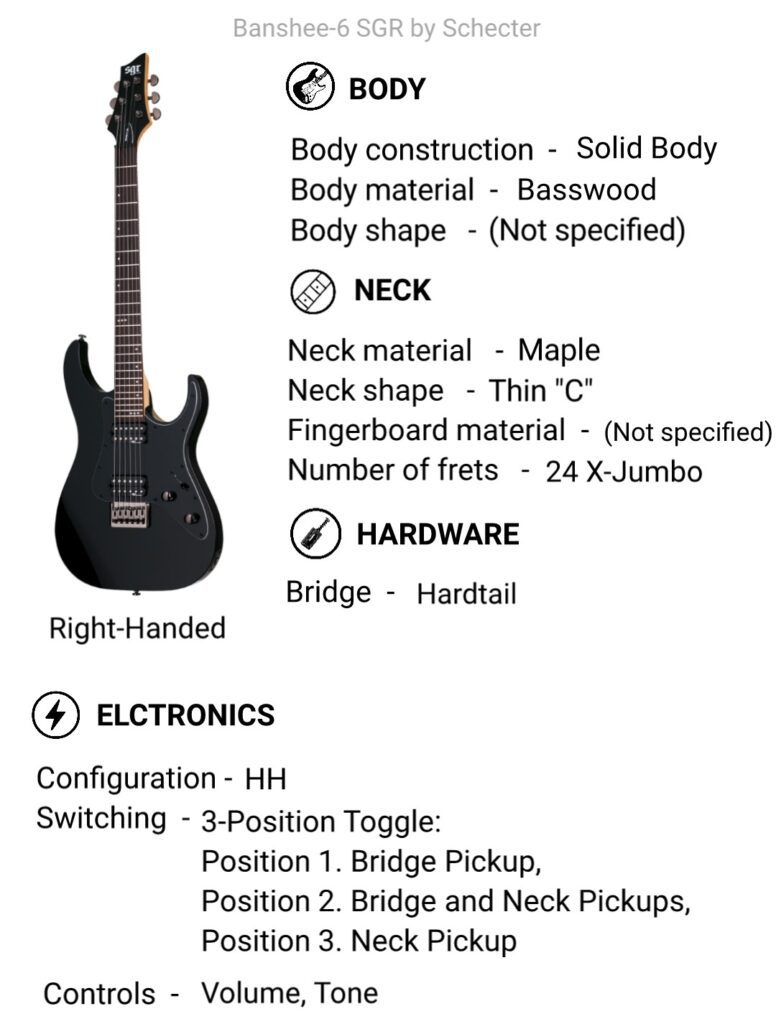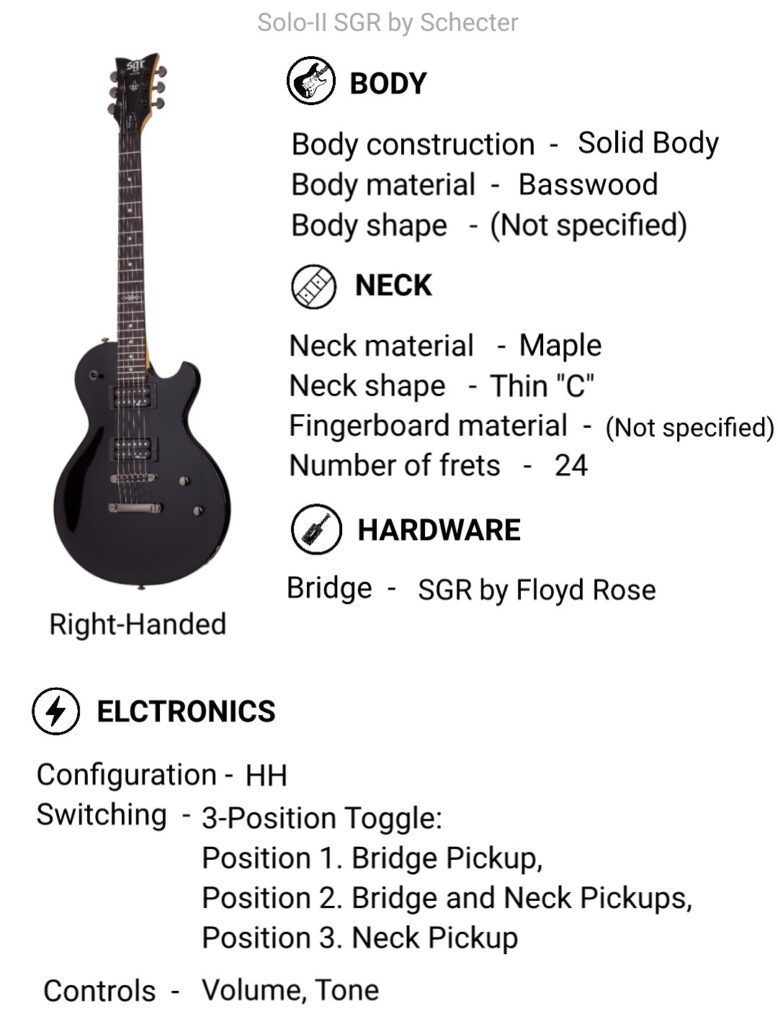list of all Jackson electric guitars with prices, specifications and features from difference online
stores at infinicisum.net
Schecter Corsair

Read More
 Amazon.in
Amazon.in  ₹ 1,28,377
₹ 1,28,377  Go To Store
Go To Store
 Amazon.in
Amazon.in  ₹ 1,28,377
₹ 1,28,377  Go To Store
Go To Store
 Amazon.com
Amazon.com  $ 1552
$ 1552  Go To Store
Go To Store
 Amazon.com
Amazon.com  $ 1552
$ 1552  Go To Store
Go To Store
 Guitar Center
Guitar Center  $ 1,299
$ 1,299  Go To Store
Go To Store
 Guitar Center
Guitar Center  $ 1,299
$ 1,299  Go To Store
Go To Store
Schecter Damien Platinum-6

Read More
 Amazon.in
Amazon.in  ₹ 1,27,182
₹ 1,27,182  Go To Store
Go To Store
 Amazon.in
Amazon.in  ₹ 1,27,182
₹ 1,27,182  Go To Store
Go To Store
 Amazon.com
Amazon.com  $ 1538
$ 1538  Go To Store
Go To Store
 Amazon.com
Amazon.com  $ 1538
$ 1538  Go To Store
Go To Store
 Guitar Center
Guitar Center  $ 849
$ 849  Go To Store
Go To Store
 Thomann
Thomann  $ 869
$ 869  Go To Store
Go To Store
 Thomann
Thomann  $ 869
$ 869  Go To Store
Go To Store
Schecter Tempest Custom
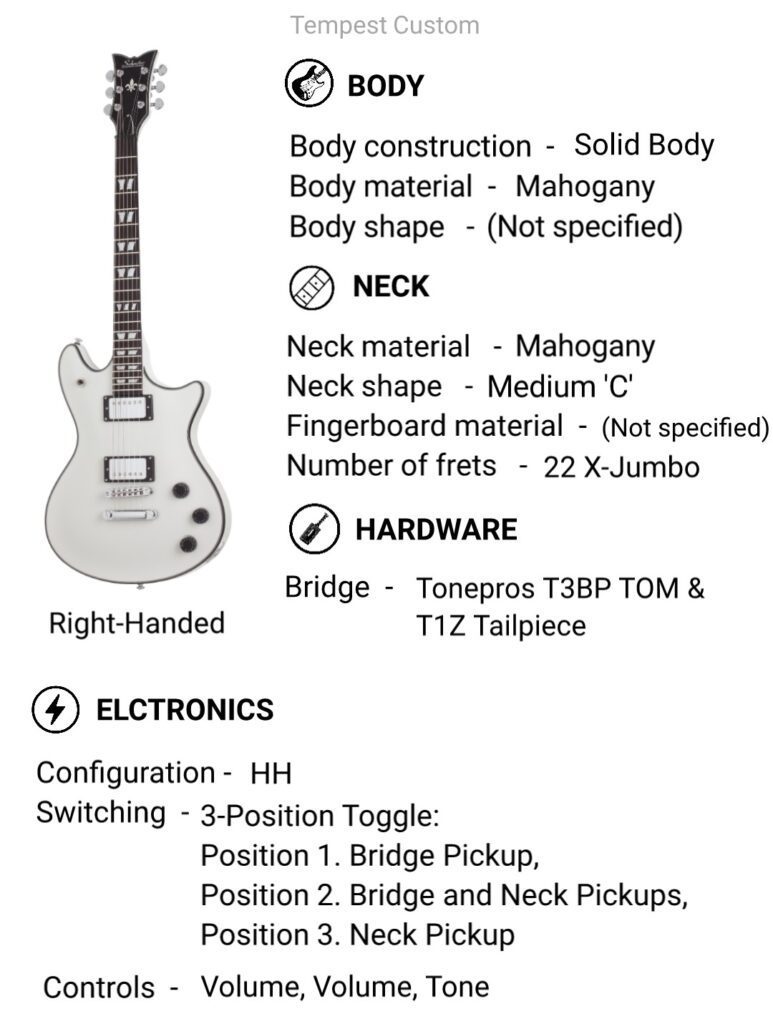
Read More
 Amazon.in
Amazon.in  ₹ 1,12,578
₹ 1,12,578  Go To Store
Go To Store
 Amazon.in
Amazon.in  ₹ 1,12,578
₹ 1,12,578  Go To Store
Go To Store
 Amazon.com
Amazon.com  $ 1361
$ 1361  Go To Store
Go To Store
 Amazon.com
Amazon.com  $ 1361
$ 1361  Go To Store
Go To Store
 Guitar Center
Guitar Center  $ 1,149
$ 1,149  Go To Store
Go To Store
 Guitar Center
Guitar Center  $ 1,149
$ 1,149  Go To Store
Go To Store
Schecter Hellraiser C-1 FR
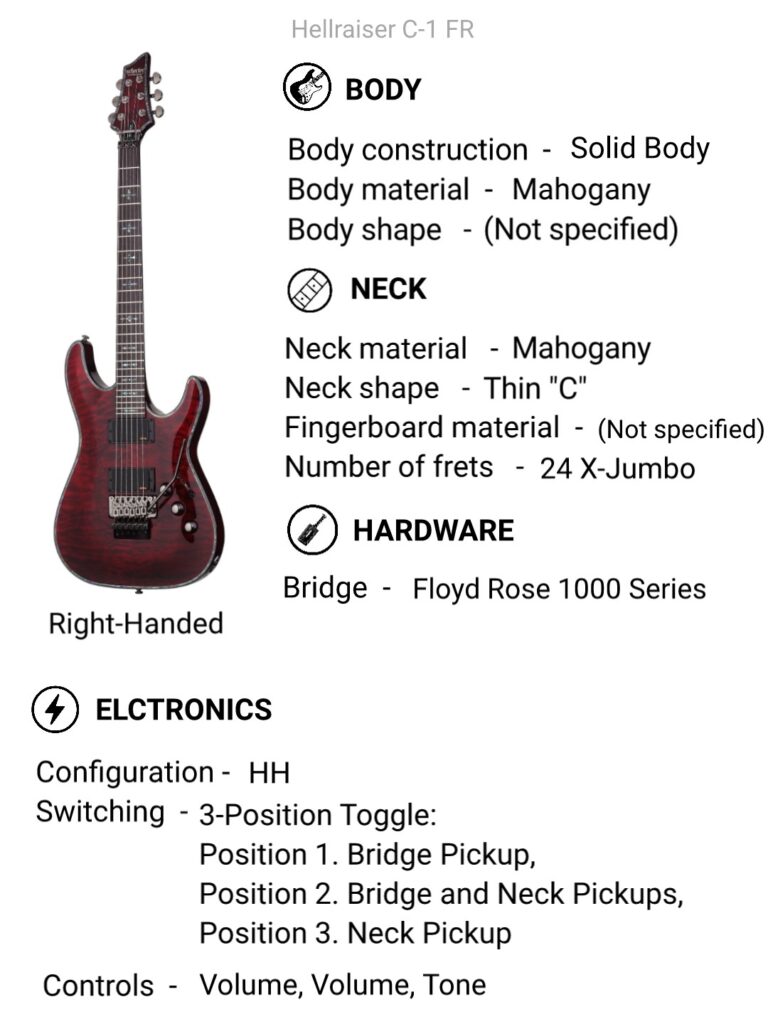
Read More
 Amazon.in
Amazon.in  ₹ 1,07,771
₹ 1,07,771  Go To Store
Go To Store
 Amazon.in
Amazon.in  ₹ 1,07,771
₹ 1,07,771  Go To Store
Go To Store
 Amazon.com
Amazon.com  $ 1303
$ 1303  Go To Store
Go To Store
 Amazon.com
Amazon.com  $ 1303
$ 1303  Go To Store
Go To Store
 Guitar Center
Guitar Center  $ 1,099
$ 1,099  Go To Store
Go To Store
 Guitar Center
Guitar Center  $ 1,099
$ 1,099  Go To Store
Go To Store
 Thomann
Thomann  $ 1,399
$ 1,399  Go To Store
Go To Store
 Thomann
Thomann  $ 1,399
$ 1,399  Go To Store
Go To Store
Schecter Hellraiser C-1
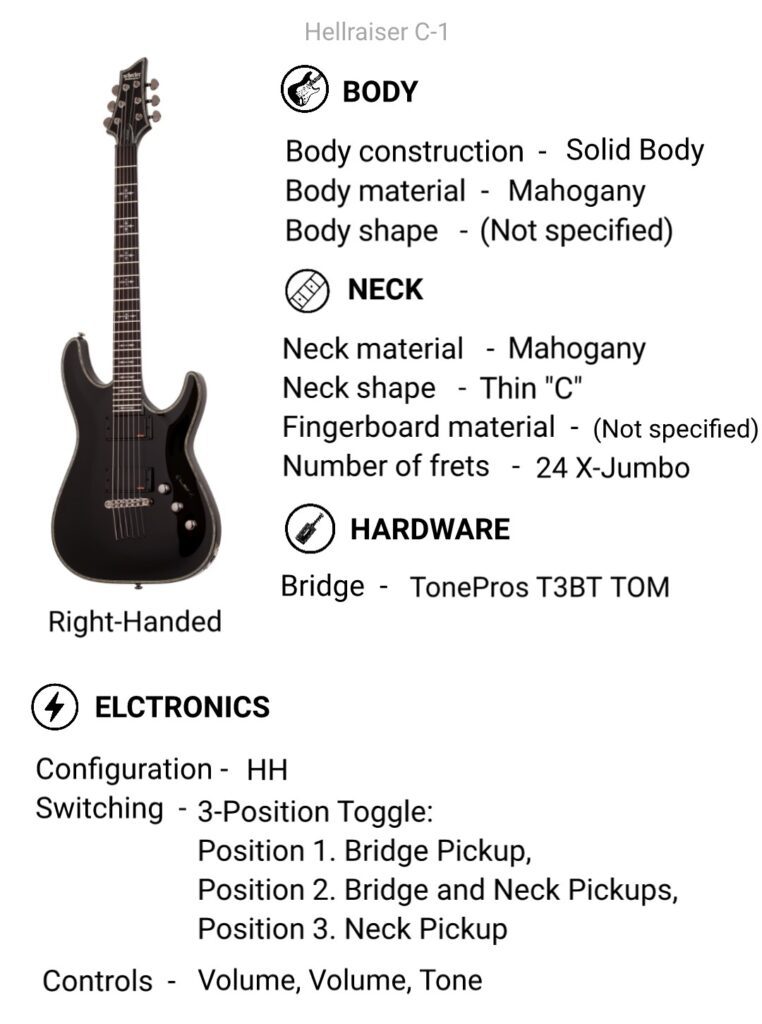
Read More
 Amazon.in
Amazon.in  ₹ 98,154
₹ 98,154  Go To Store
Go To Store
 Amazon.in
Amazon.in  ₹ 98,154
₹ 98,154  Go To Store
Go To Store
 Amazon.com
Amazon.com  $ 1187
$ 1187  Go To Store
Go To Store
 Amazon.com
Amazon.com  $ 1187
$ 1187  Go To Store
Go To Store
 Guitar Center
Guitar Center  $ 999
$ 999  Go To Store
Go To Store
 Thomann
Thomann  $ 1,159
$ 1,159  Go To Store
Go To Store
 Thomann
Thomann  $ 1,159
$ 1,159  Go To Store
Go To Store
Schecter Banshee GT FR

Read More
 Amazon.in
Amazon.in  ₹ 93,699
₹ 93,699  Go To Store
Go To Store
 Amazon.in
Amazon.in  ₹ 93,699
₹ 93,699  Go To Store
Go To Store
 Amazon.com
Amazon.com  $ 1133
$ 1133  Go To Store
Go To Store
 Amazon.com
Amazon.com  $ 1133
$ 1133  Go To Store
Go To Store
 Guitar Center
Guitar Center  $ 1,099
$ 1,099  Go To Store
Go To Store
 Guitar Center
Guitar Center  $ 1,099
$ 1,099  Go To Store
Go To Store
 Thomann
Thomann  $ 899
$ 899  Go To Store
Go To Store
 Thomann
Thomann  $ 899
$ 899  Go To Store
Go To Store
Schecter Nick Johnston Traditional H/S/S
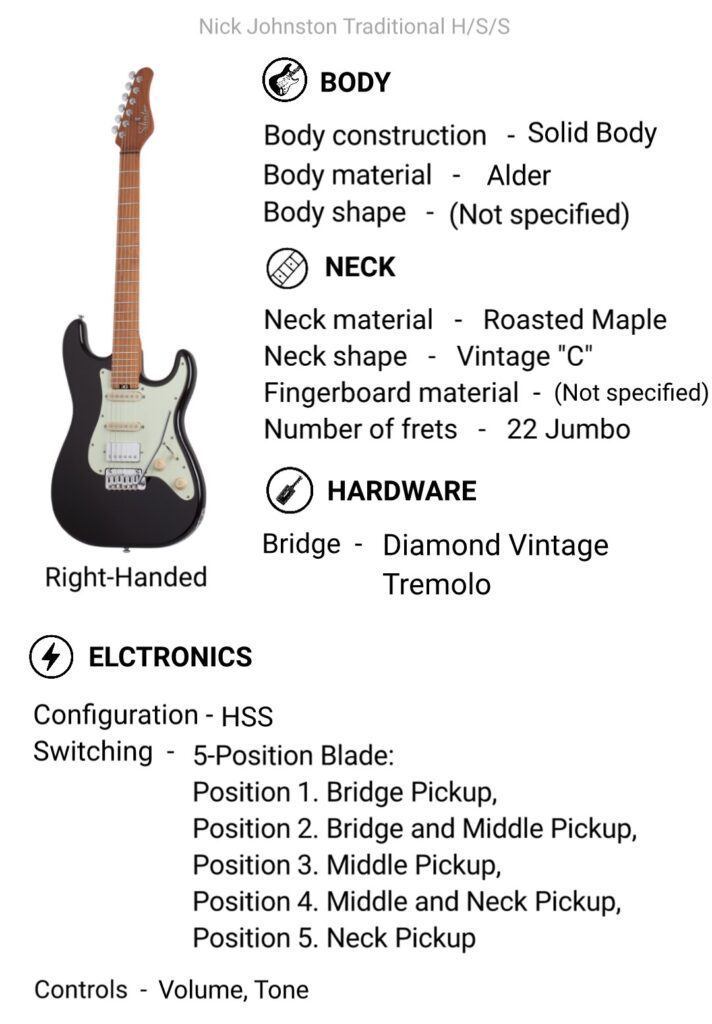
Read More
 Amazon.in
Amazon.in  ₹ 89,269
₹ 89,269  Go To Store
Go To Store
 Amazon.in
Amazon.in  ₹ 89,269
₹ 89,269  Go To Store
Go To Store
 Amazon.com
Amazon.com  $ 1078
$ 1078  Go To Store
Go To Store
 Amazon.com
Amazon.com  $ 1078
$ 1078  Go To Store
Go To Store
 Guitar Center
Guitar Center  $ 899
$ 899  Go To Store
Go To Store
Schecter PT Van Nuys
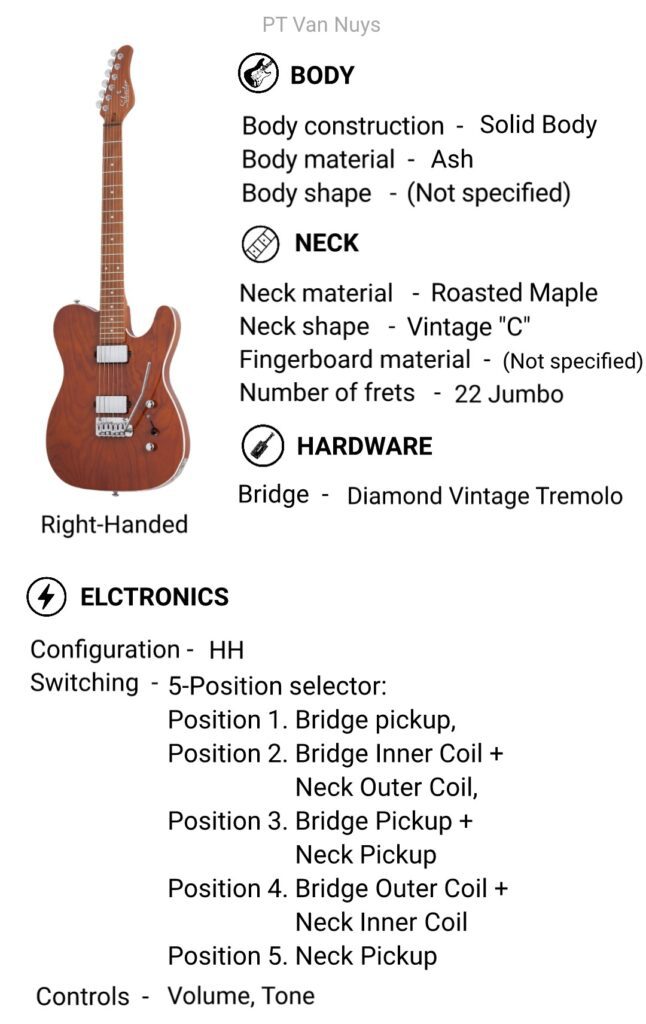
Read More
 Amazon.in
Amazon.in  ₹ 89,225
₹ 89,225  Go To Store
Go To Store
 Amazon.in
Amazon.in  ₹ 89,225
₹ 89,225  Go To Store
Go To Store
 Amazon.com
Amazon.com  $ 1078
$ 1078  Go To Store
Go To Store
 Amazon.com
Amazon.com  $ 1078
$ 1078  Go To Store
Go To Store
 Guitar Center
Guitar Center  $ 899
$ 899  Go To Store
Go To Store
 Thomann
Thomann  $ 833
$ 833  Go To Store
Go To Store
 Thomann
Thomann  $ 833
$ 833  Go To Store
Go To Store
Schecter Nick Johnston Signature PT
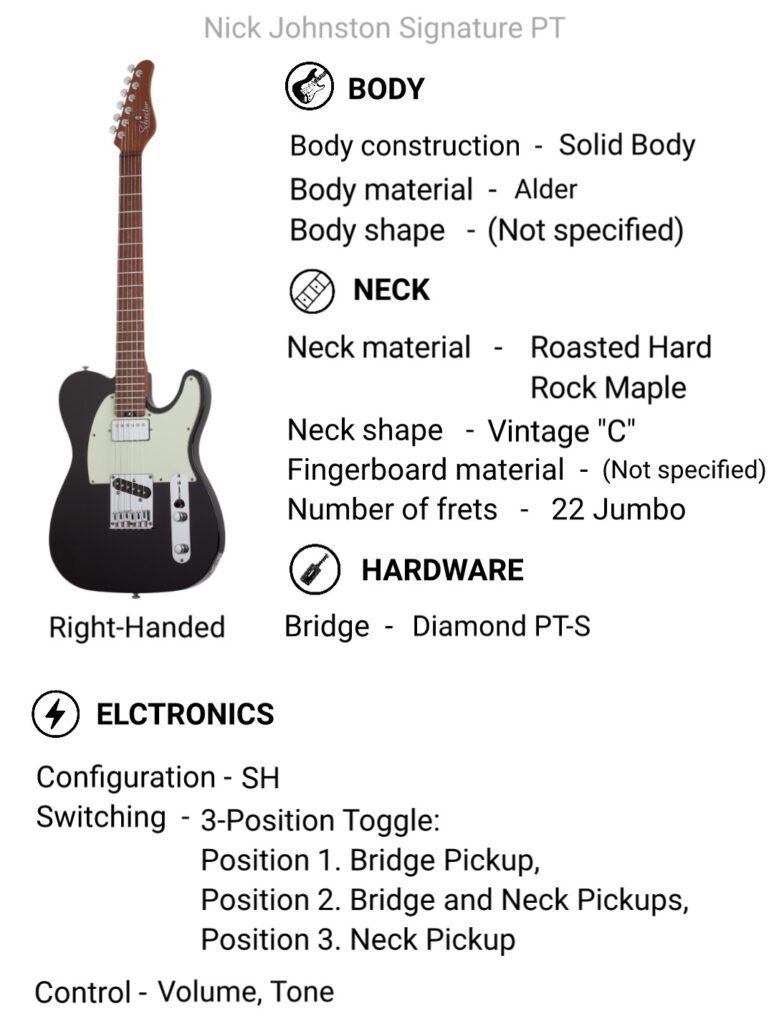
Read More
 Amazon.in
Amazon.in  ₹ 86,793
₹ 86,793  Go To Store
Go To Store
 Amazon.in
Amazon.in  ₹ 86,793
₹ 86,793  Go To Store
Go To Store
 Amazon.com
Amazon.com  $ 1048
$ 1048  Go To Store
Go To Store
 Amazon.com
Amazon.com  $ 1048
$ 1048  Go To Store
Go To Store
 Guitar Center
Guitar Center  $ 899
$ 899  Go To Store
Go To Store
Schecter Nick Johnston Traditional

Read More
 Amazon.in
Amazon.in  ₹ 76,900
₹ 76,900  Go To Store
Go To Store
 Amazon.in
Amazon.in  ₹ 76,900
₹ 76,900  Go To Store
Go To Store
 Amazon.com
Amazon.com  $ 930
$ 930  Go To Store
Go To Store
 Amazon.com
Amazon.com  $ 930
$ 930  Go To Store
Go To Store
 Guitar Center
Guitar Center  $ 899
$ 899  Go To Store
Go To Store
Schecter C-6 Pro FR
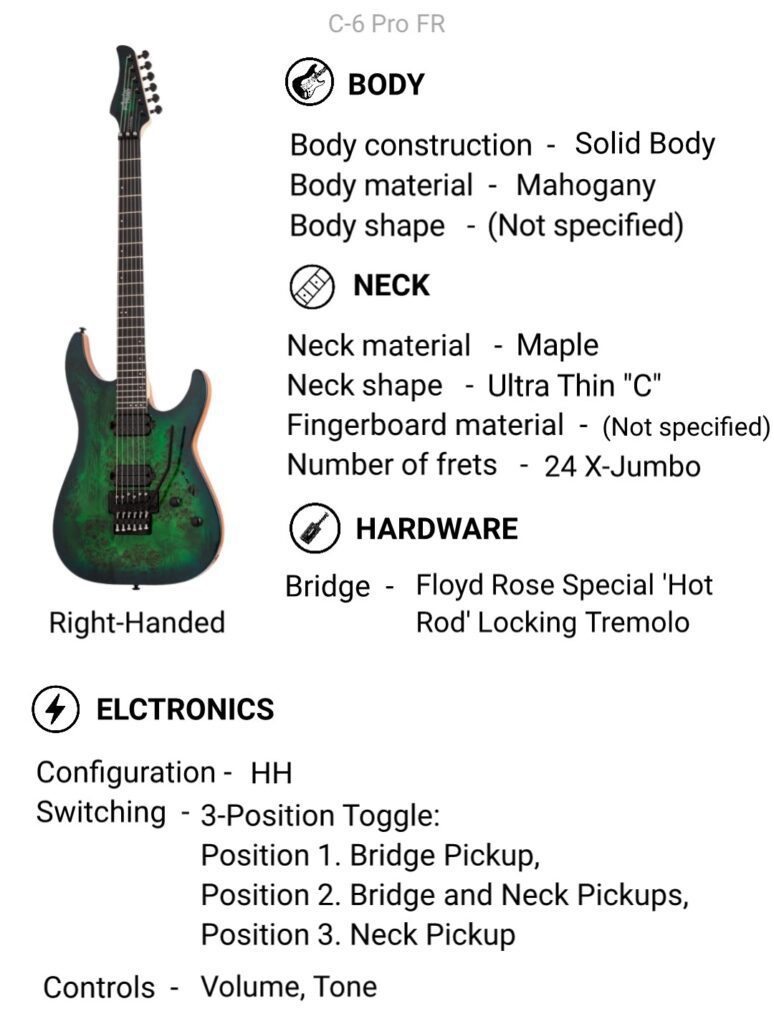
Read More
 Amazon.in
Amazon.in  ₹ 71,469
₹ 71,469 Go To Store
Go To Store
 Amazon.in
Amazon.in  ₹ 71,469
₹ 71,469 Go To Store
Go To Store
 Thomann
Thomann  $ 589
$ 589  Go To Store
Go To Store
 Thomann
Thomann  $ 589
$ 589  Go To Store
Go To Store
Schecter PT Fastback
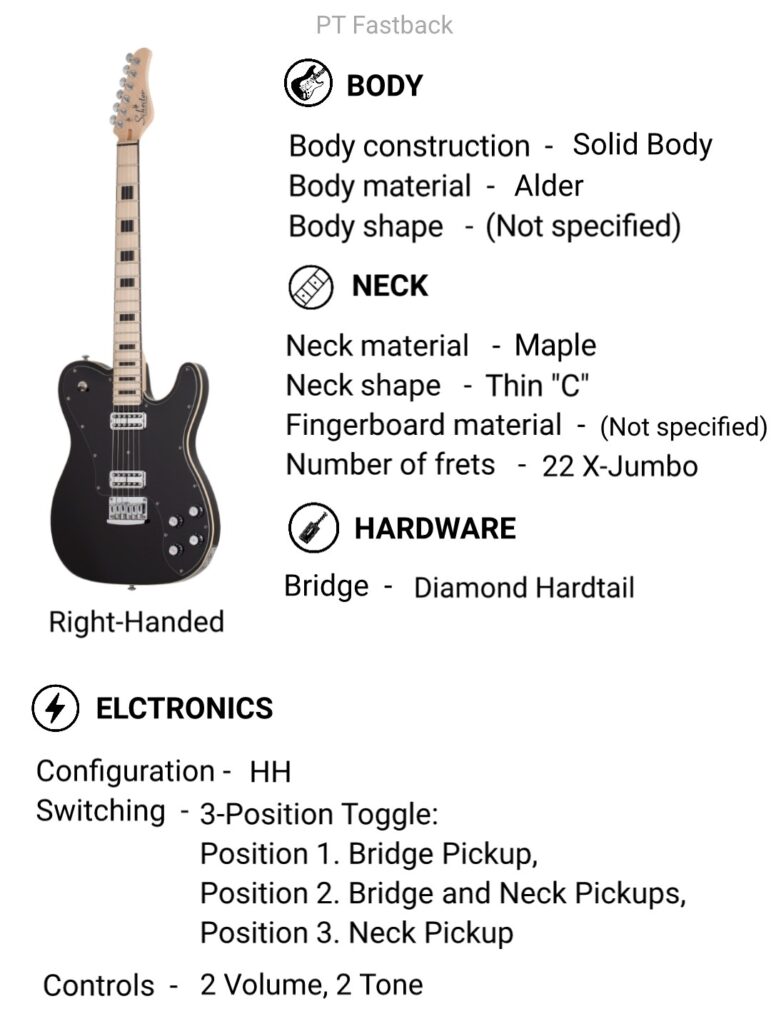
Read More
 Amazon.in
Amazon.in  ₹ 68,619
₹ 68,619  Go To Store
Go To Store
 Amazon.in
Amazon.in  ₹ 68,619
₹ 68,619  Go To Store
Go To Store
 Guitar Center
Guitar Center  $ 699
$ 699  Go To Store
Go To Store
 Thomann
Thomann  $ 769
$ 769  Go To Store
Go To Store
 Thomann
Thomann  $ 769
$ 769  Go To Store
Go To Store
Schecter C-6 Deluxe
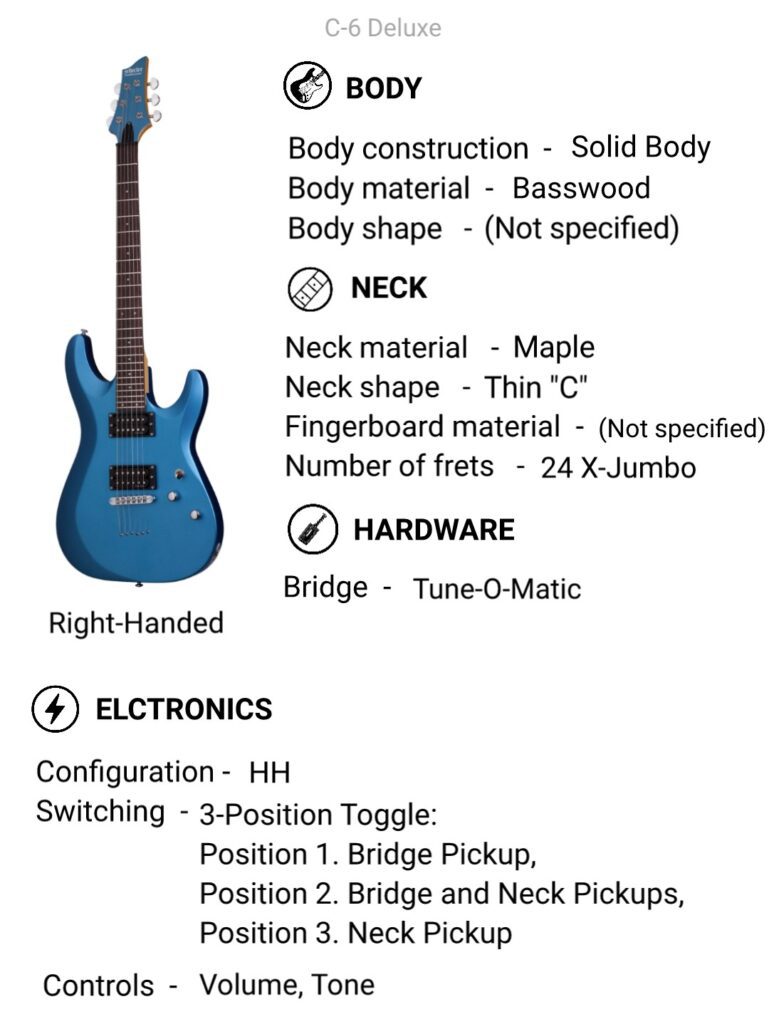
Schecter Sun Valley Super Shredder FR

Read More
 Amazon.in
Amazon.in  ₹ 59,501
₹ 59,501  Go To Store
Go To Store
 Amazon.in
Amazon.in  ₹ 59,501
₹ 59,501  Go To Store
Go To Store
 Amazon.com
Amazon.com  $ 719
$ 719  Go To Store
Go To Store
 Amazon.com
Amazon.com  $ 719
$ 719  Go To Store
Go To Store
 Guitar Center
Guitar Center  $ 749
$ 749  Go To Store
Go To Store
 Thomann
Thomann  $ 543
$ 543  Go To Store
Go To Store
 Thomann
Thomann  $ 543
$ 543  Go To Store
Go To Store
Banshee-6 FR SGR by Schecter
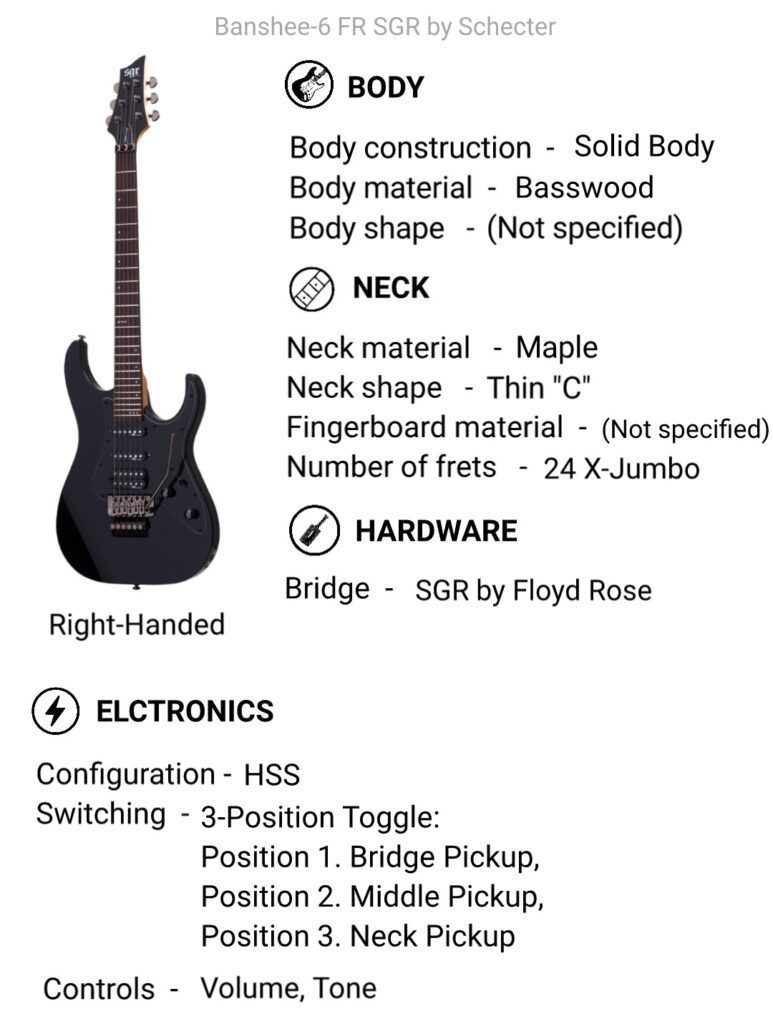
Avenger SGR by Schecter
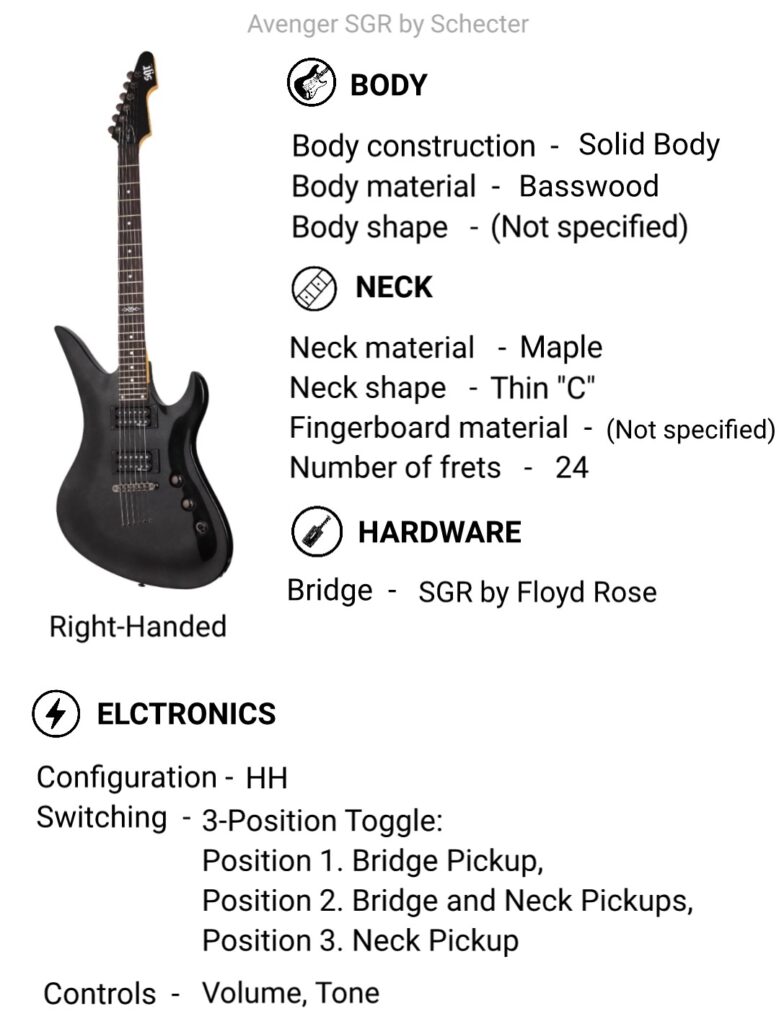
Read More
 Amazon.in
Amazon.in  ₹ 25,499
₹ 25,499  Go To Store
Go To Store
 Amazon.in
Amazon.in  ₹ 25,499
₹ 25,499  Go To Store
Go To Store
 Amazon.com
Amazon.com  $ 308
$ 308  Go To Store
Go To Store
 Amazon.com
Amazon.com  $ 308
$ 308  Go To Store
Go To Store
C-1 SGR by Schecter
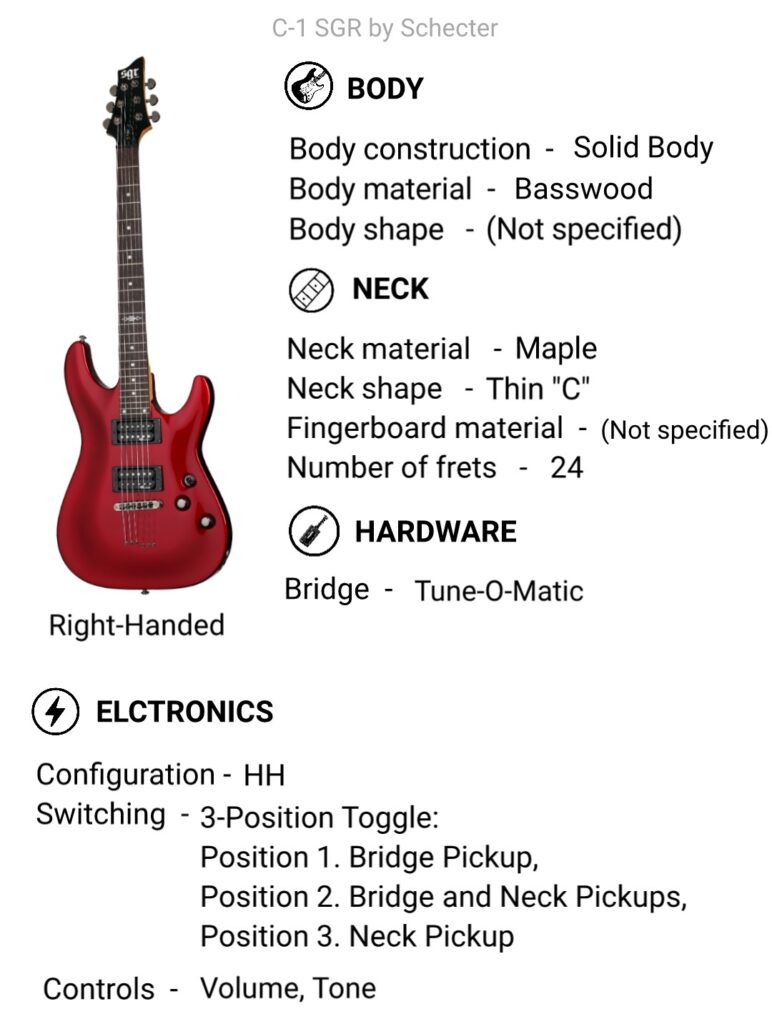
Read More
 Amazon.in
Amazon.in  ₹ 25,499
₹ 25,499  Go To Store
Go To Store
 Amazon.in
Amazon.in  ₹ 25,499
₹ 25,499  Go To Store
Go To Store
 Amazon.com
Amazon.com  $ 308
$ 308  Go To Store
Go To Store
 Amazon.com
Amazon.com  $ 308
$ 308  Go To Store
Go To Store
 Guitar Center
Guitar Center  $ 179
$ 179  Go To Store
Go To Store
Introduction: In the realm of electric guitars, Schecter Guitar Research has carved a niche for itself by combining cutting-edge design, high-performance features, and a commitment to meeting the diverse needs of modern guitarists. From the searing tones of the Hellraiser series to the sleek designs of the Banshee and the collaborative masterpieces with artists like Keith Merrow, Schecter’s electric guitar lineup is a testament to innovation and precision craftsmanship.
”Read_More”
1. Hellraiser Series:
The Hellraiser series is known for its combination of premium features and a dark aesthetic. Guitars in this series often feature active EMG pickups, mahogany bodies, and set neck constructions. The Hellraiser series is favored by players in heavy metal and hard rock genres.
2. Omen Series:
The Omen series is designed to offer quality and affordability. These guitars are well-suited for players seeking an entry-level or mid-range instrument without compromising on performance. Omen guitars often feature basswood or mahogany bodies and a variety of pickup configurations.
3. C-1 Series:
The C-1 series includes a range of models designed for versatility and performance. These guitars typically feature mahogany bodies, set necks, and a variety of pickup configurations. The C-1 series is known for its balance of playability and tone.
4. Blackjack Series:
The Blackjack series is geared towards modern players who demand high-performance features. Guitars in this series often feature slim profiles, extended scale lengths, and a variety of high-output pickups. The series is suitable for players in rock, metal, and progressive genres.
5. S-1 Series:
The S-1 series includes guitars with sleek and stylish designs. These guitars often feature a double-cutaway body shape, making them comfortable and accessible for various playing styles. The S-1 series is known for its balance of aesthetics and playability.
6. KM Series (Keith Merrow Signature):
The KM series represents guitars designed in collaboration with guitarist Keith Merrow. These guitars are tailored for modern metal players and often feature extended scale lengths, multi-scale designs, and high-output pickups. The KM series is recognized for its focus on technical precision and versatility.
7. E-1 Series:
The E-1 series includes guitars with a classic single-cutaway design. These guitars often feature mahogany bodies, set necks, and a variety of pickup configurations. The E-1 series is known for its traditional aesthetic combined with modern features.
8. Banshee Series:
The Banshee series is designed for players seeking versatility and high-performance features. Guitars in this series often feature a double-cutaway body shape, fast neck profiles, and a variety of pickup options. The Banshee series is suitable for players in various genres.
9. Reaper Series:
The Reaper series features guitars designed for modern players with a focus on ergonomics and playability. Guitars in this series often have contoured bodies, slim neck profiles, and a variety of pickup configurations. The Reaper series is known for its modern design elements.
10. Sun Valley Super Shredder Series:
The Sun Valley Super Shredder series is tailored for players who prioritize speed and technical playing. Guitars in this series often feature super-strat designs, Floyd Rose tremolo systems, and high-output pickups. The series is recognized for its focus on shred-friendly features.
11. Apocalypse Series:
The Apocalypse series is designed for players who seek aggressive tones and modern features. Guitars in this series often feature swamp ash bodies, multi-scale designs, and high-output pickups. The Apocalypse series is known for its modern aesthetic and versatile performance capabilities.
12. Custom Shop Series:
Schecter’s Custom Shop series features custom and limited-edition guitars crafted with meticulous attention to detail. These guitars often showcase unique finishes, premium materials, and custom appointments. The Custom Shop series represents the pinnacle of Schecter craftsmanship.
13. Diamond Series:
The Diamond series encompasses various models, including classic and signature guitars. These guitars are known for their diverse designs and features, catering to a broad range of playing styles and preferences.
14. Signature Models:
Schecter offers signature models in collaboration with renowned artists. These guitars are designed to the specifications and preferences of the featured artists, often featuring unique finishes, pickups, and custom appointments.
15. Special Editions and Limited Runs:
Schecter periodically releases special edition and limited-run guitars. These guitars often showcase unique finishes, features, and specifications. They cater to collectors and players looking for distinctive instruments.
In Conclusion: Schecter Electric Guitars, with their diverse series and innovative designs, have secured a prominent place in the hearts of players across the musical spectrum. Whether you’re a metal virtuoso seeking the relentless power of the Hellraiser or a versatile musician exploring the depths of the Banshee series, Schecter offers a sonic palette that resonates with passion, precision, and relentless innovation. As the journey of Schecter Guitar Research continues, one can only anticipate what sonic landscapes they will explore and conquer next in the ever-evolving world of electric guitars.
How to choose right Schecter electric Guitar
Choosing the right Schecter electric guitar involves considering various factors that align with your playing style, preferences, and budget. Here’s a guide to help you make an informed decision:
1. Define Your Playing Style:
- Metal and Hard Rock: If you play heavier genres, consider models with high-output pickups, extended scale lengths, and features designed for aggressive playing styles.
- Versatility: If you play a variety of genres, look for models with versatile pickup configurations, comfortable neck profiles, and a body shape that suits your preferences.
2. Consider Body Shape:
- Schecter offers guitars with various body shapes, from classic single-cutaway to modern super-strat designs. Choose a shape that feels comfortable and suits your aesthetic preferences.
3. Pickup Configuration:
- Active vs. Passive Pickups: Schecter guitars often come with both active and passive pickup options. Active pickups provide high output and clarity, suitable for heavy genres, while passive pickups offer a more traditional and dynamic tone.
- Versatile Configurations: Some models come with HSS (humbucker/single-coil/single-coil) or HSH (humbucker/single-coil/humbucker) setups, allowing for a wide range of tones.
4. Neck Profile and Scale Length:
- Neck Profile: Choose a neck profile that feels comfortable in your hands. Schecter offers various neck profiles, from slim to thicker profiles.
- Scale Length: Consider whether you prefer a standard scale length (25.5 inches) or a longer scale for added tension and extended range.
5. Construction and Tonewoods:
- Solid Body: Most Schecter guitars have solid bodies, contributing to sustain and resonance.
- Tonewoods: Consider the tonewoods used in the construction. Common woods include mahogany, basswood, and swamp ash, each offering unique tonal characteristics.
6. Bridge and Tremolo Systems:
- Fixed Bridge: Offers stability and simplicity, suitable for players who don’t use tremolo often.
- Floyd Rose Tremolo: Provides the ability to perform dive bombs and other whammy effects. Consider whether you want a floating or flush-mounted tremolo.
7. Series and Models:
- Explore the various Schecter series mentioned earlier (Hellraiser, Omen, C-1, Blackjack, etc.) to find models that match your preferences and budget.
- Check out signature models if you admire the playing style of a particular artist.
8. Budget Considerations:
- Schecter offers guitars at various price points. Determine your budget range and explore models within that range.
- Keep in mind that Schecter’s more affordable series (e.g., Omen) still offer quality and performance.
9. Signature Models:
- If you have a favorite artist, consider their signature model. These guitars are often designed to the specifications of the artist and may feature unique finishes and components.
10. Try Before You Buy:
- If possible, play the guitar in person or try similar models in a store. Pay attention to how it feels, the weight, and how accessible the upper frets are.
11. Research and Reviews:
- Read reviews and watch demo videos to get an idea of the guitar’s sound and performance in different contexts.
12. Future Upgrades:
- Consider whether you might want to upgrade pickups, hardware, or other components in the future. Some models are more mod-friendly than others.
13. Check for Upgrades:
- Some Schecter models offer upgraded features like locking tuners, coil-splitting options, or special finishes. Assess whether these features align with your preferences.
14. Special Editions:
- Explore special edition and limited-run models if you’re looking for unique finishes and features.
By considering these factors, you can narrow down your options and find the Schecter electric guitar that suits your playing style and preferences. Remember that the “right” guitar is ultimately the one that inspires you to play and create music.
Pros and Cons of Schecter electric Guitars
Schecter electric guitars are known for their diverse range of models, high-quality construction, and suitability for various playing styles. However, like any brand, they come with their own set of pros and cons. Here’s a breakdown to help you make an informed decision:
Pros of Schecter Electric Guitars:
- Diverse Range of Models:
- Schecter offers a wide variety of models, catering to different playing styles and preferences. Whether you’re into metal, rock, or blues, there’s likely a Schecter model that suits your taste.
- High-Quality Construction:
- Schecter guitars are known for their solid construction using quality materials. This includes various tonewoods, well-designed necks, and reliable hardware.
- Versatility in Pickup Configurations:
- Many Schecter models come with versatile pickup configurations, allowing players to achieve a broad range of tones. From active to passive pickups and various coil-splitting options, Schecter guitars offer tonal flexibility.
- Artist Collaborations and Signature Models:
- Schecter collaborates with renowned artists to create signature models. These guitars are often designed to the specifications of the artist, offering fans a chance to play a guitar inspired by their musical heroes.
- Innovative Design Features:
- Schecter is known for incorporating modern design features, such as extended scale lengths, multi-scale designs, and ergonomic body shapes. These features cater to contemporary players seeking innovation.
- Quality Control:
- Schecter maintains high standards of quality control, ensuring that guitars meet consistent quality levels. This commitment to quality is reflected in the craftsmanship of their instruments.
- Affordable Options:
- Schecter offers a range of guitars at different price points. Players with varying budgets can find quality instruments within the Schecter lineup, including more affordable series like the Omen.
- Custom Shop Excellence:
- The Schecter Custom Shop produces high-end, custom, and limited-edition guitars. These instruments showcase top-tier craftsmanship and unique features, appealing to collectors and enthusiasts.
Cons of Schecter Electric Guitars:
- Weight and Balance:
- Some players find that certain Schecter models, especially those with certain body shapes, can be relatively heavy. The weight distribution may affect the balance when playing standing up.
- Limited Focus on Traditional Designs:
- If you are specifically looking for guitars with traditional body shapes and vintage tones, Schecter’s design philosophy may not align with your preferences. The brand tends to focus more on modern and aggressive designs.
- Limited Availability of Left-Handed Models:
- The availability of left-handed models may be limited compared to other brands, making it challenging for left-handed players to find specific models.
- Learning Curve for Certain Features:
- Some Schecter guitars come equipped with features like Floyd Rose tremolo systems, which can have a learning curve for restringing and maintenance compared to fixed bridges.
- Less Emphasis on Acoustic Guitars:
- Schecter is primarily known for its electric guitars, and its acoustic guitar offerings are limited compared to other brands that specialize in acoustic instruments.
- Limited Availability in Some Regions:
- Depending on your location, the availability of specific Schecter models may be limited. Some regions may have a more extensive selection than others.
- Brand Recognition:
- While Schecter is well-known among enthusiasts, it may not have the same level of mainstream recognition as some other guitar brands. This might affect resale value for some players.
In summary, Schecter electric guitars are celebrated for their versatility, high-quality construction, and innovative designs. The cons are generally subjective and depend on individual preferences and playing styles. It’s recommended to try out different Schecter models in person, if possible, and consider your specific needs when making a decision.
History of Schecter electric Guitars
The history of Schecter Guitar Research is a fascinating journey that began with a small repair shop and evolved into a renowned brand known for its high-quality electric guitars. Here’s an overview of the key milestones in the history of Schecter:
1976 – Founding of Schecter Guitar Research:
- Schecter Guitar Research was founded in 1976 by David Schecter in Van Nuys, California. Initially, the company focused on providing guitar repair services and producing replacement parts for existing guitars.
1979 – Transition to Guitar Parts Manufacturing:
- Schecter gained recognition for producing high-quality replacement parts, including necks and bodies, which were compatible with popular guitar models of the time. This period marked the beginning of Schecter’s reputation for crafting aftermarket components.
1983 – Introduction of Schecter Guitars:
- The company expanded its offerings by introducing its own line of guitars. The early Schecter guitars gained attention for their quality craftsmanship and unique designs. The company’s commitment to excellence in guitar building became evident during this period.
1984 – Acquisition by Dallas Music Industries:
- In 1984, Schecter was acquired by Dallas Music Industries (DMI), which sought to capitalize on Schecter’s reputation for producing high-quality guitar parts. DMI continued to build upon the Schecter brand, incorporating the company’s innovations into its products.
1987 – Custom Shop and Artist Collaborations:
- Schecter established its Custom Shop, allowing musicians to order custom-built guitars tailored to their specifications. This period also saw collaborations with artists such as Pete Townshend, Mark Knopfler, and Richie Sambora, further elevating Schecter’s profile in the industry.
1996 – Acquisition by Hisatake Shibuya:
- In 1996, Schecter underwent another ownership change when it was acquired by Hisatake Shibuya, a Japanese entrepreneur. Under Shibuya’s leadership, Schecter continued to expand its product lines and make strides in the guitar market.
2003 – Return of the Custom Shop:
- Schecter revitalized its Custom Shop, offering a range of high-end, custom-built guitars with premium features and craftsmanship. This move solidified Schecter’s position as a brand capable of producing instruments for discerning players.
2005 – Expansion of Affordable Series:
- Schecter expanded its product range to include more affordable series, such as the Diamond Series and Omen Series. These series aimed to provide quality instruments at various price points, making Schecter guitars more accessible to a broader audience.
2010s – Continued Innovation and Artist Collaborations:
- In the 2010s, Schecter continued to innovate, introducing new models with modern features like extended scale lengths, multi-scale designs, and advanced electronics. Collaborations with artists like Jeff Loomis, Keith Merrow, and Synyster Gates further strengthened Schecter’s presence in various genres.
Present Day – Global Recognition:
- Today, Schecter Guitar Research is recognized globally as a reputable brand producing a diverse range of electric guitars suitable for various playing styles. The company’s commitment to quality, innovation, and artist collaborations has contributed to its enduring success.
Schecter’s journey from a small repair shop to a major player in the guitar industry showcases the brand’s resilience, commitment to craftsmanship, and ability to adapt to the evolving needs of musicians. The diverse lineup of Schecter electric guitars continues to attract players seeking high-performance instruments across different genres.
”Read_Less”


